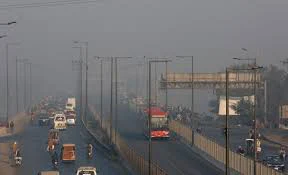Pakistan’s Air Pollution Crisis: Rising Smog Levels Lead to Health Emergency and Hospitalizations
0
November 07, 2024
Pakistan’s Air Pollution Crisis: Hundreds Hospitalized as Smog Levels Surge
In recent weeks, Pakistan has faced a severe spike in air pollution, sending hundreds of people to hospitals as smog levels reach dangerous highs. Lahore, often ranked among the world’s most polluted cities, has been particularly affected, with visibility reduced drastically and air quality monitors indicating hazardous levels across the region.
Air pollution in Pakistan is primarily driven by factors such as vehicular emissions, industrial discharge, and seasonal crop burning. Winter often exacerbates these issues as the cooler air traps pollutants close to the ground in a phenomenon known as temperature inversion. The impact is felt not only in compromised air quality but also in public health. Respiratory ailments, particularly among the elderly, children, and those with preexisting health conditions, have surged, with hospitals reporting increased admissions for breathing problems, asthma, and other pollution-induced health complications.
Local authorities have started implementing emergency measures to combat the crisis. Schools have been ordered to close on high-smog days, and some industries have been directed to reduce operations. The government is also encouraging citizens to wear masks and avoid outdoor activities during peak smog hours.
Experts argue that long-term strategies are essential to address the pollution crisis effectively. This includes investing in cleaner energy sources, enforcing stricter regulations on industrial emissions, and promoting eco-friendly transportation options. Without these measures, Pakistan’s smog problem could worsen, with dire consequences for public health and quality of life.
While immediate relief may be limited, public awareness and pressure on policymakers could drive positive change, ultimately contributing to a cleaner, healthier future for Pakistan.











